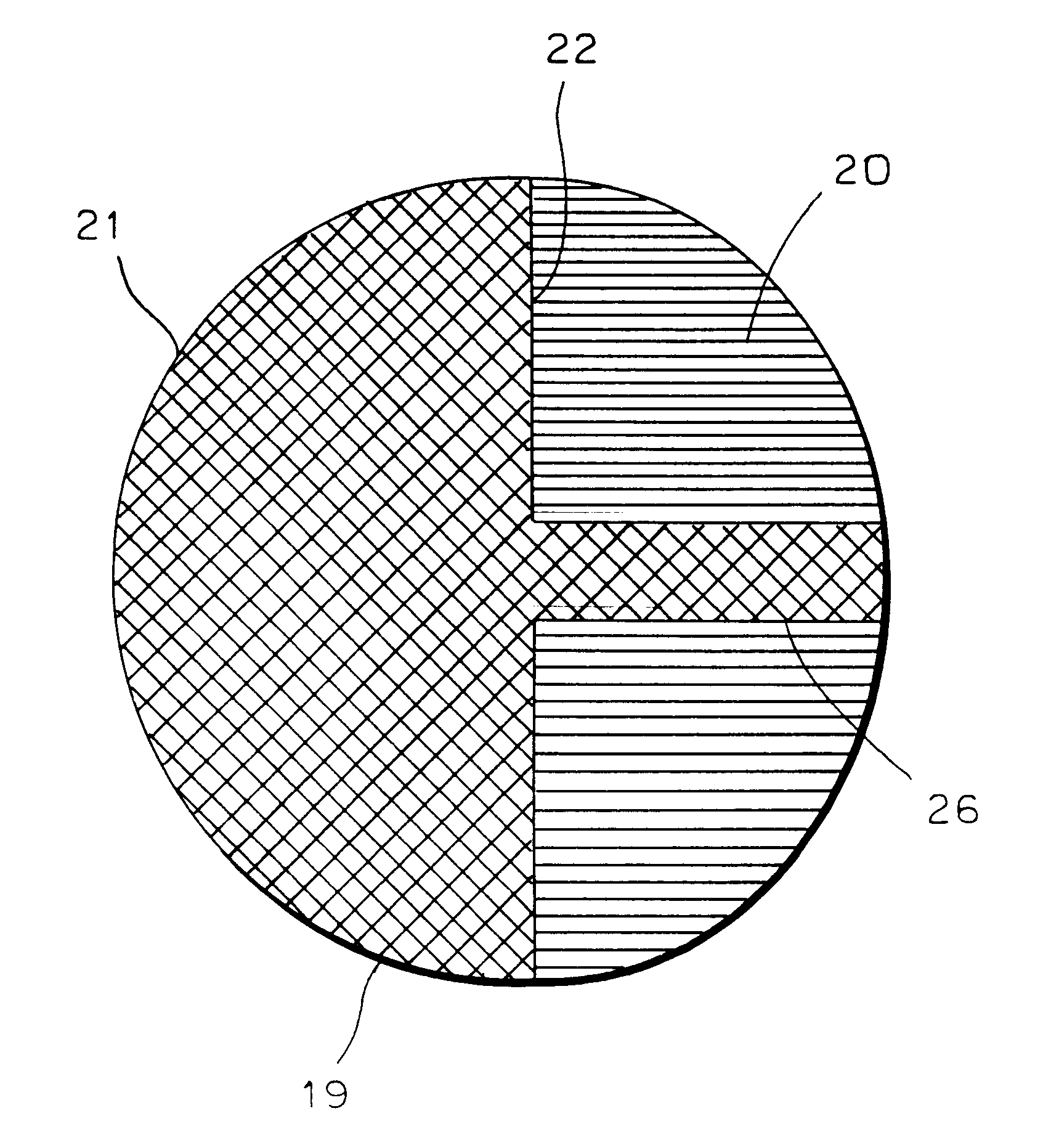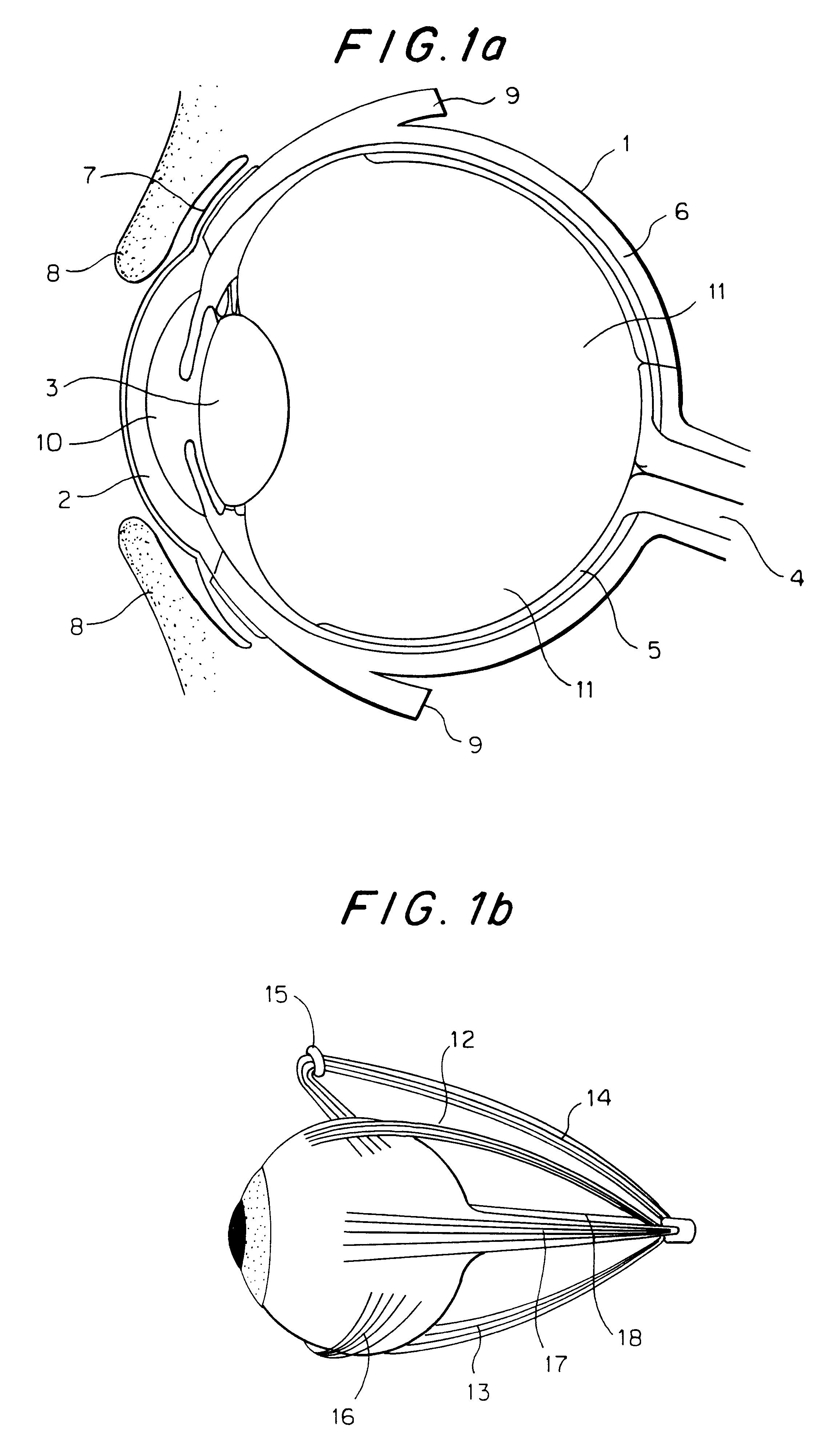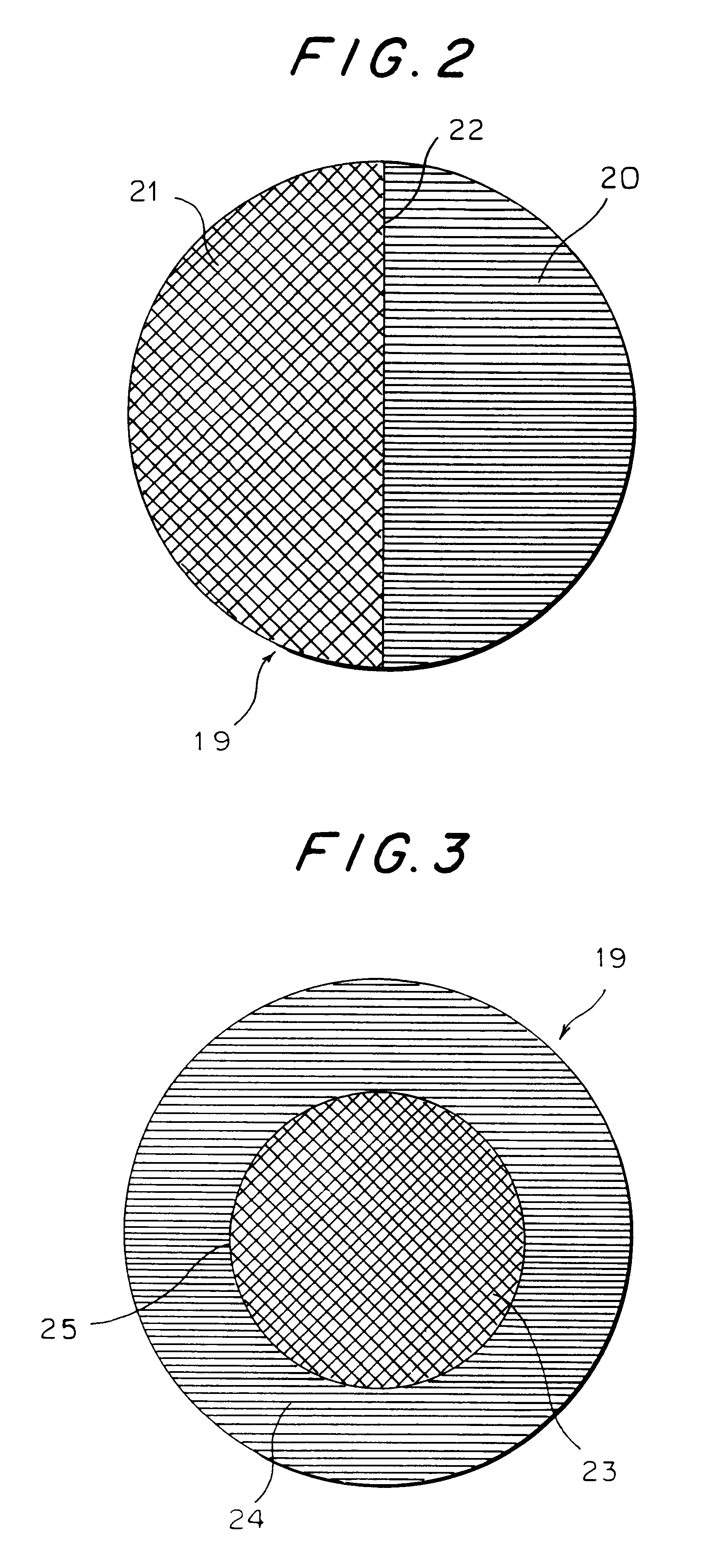Ocular socket prosthesis
a technology for ocular sockets and prostheses, applied in the field of ocular socket prostheses, can solve the problems of unsightly appearance, major technical difficulties to be overcome, and difficult shells of cosmetic shells, and achieve the effect of reducing the risk of infection
- Summary
- Abstract
- Description
- Claims
- Application Information
AI Technical Summary
Benefits of technology
Problems solved by technology
Method used
Image
Examples
first embodiment
FIG. 4 illustrates a sagittal section showing a prosthesis according to the invention in situ after implantation.
FIG. 5 illustrates a sagittal section of a third preferred embodiment of the invention, in which the prosthesis comprises a homogeneous gel hemisphere and a sponge hemisphere, and in which the sponge hemisphere is strengthened by the presence of a column of gel passing through its centre.
FIG. 6 is a photograph showing an implant according to the first preferred embodiment of the invention.
FIG. 7 shows the appearance of an implant according to the first embodiment at six months after implantation into a rabbit, showing the thick, continuous conjunctival layer.
FIG. 8 is a histological section of the anterior (sponge) half of an implant according to the first embodiment of the invention, showing extensive infiltration of tissue into the implant.
The eyeball and surrounding structures are generally illustrated in FIG. 1a, which represents a sagittal section through the eyeball...
example 1
A first preferred embodiment of the invention is illustrated in FIG. 2. This shows a socket prosthesis (19), which is generally spherical in shape, and which comprises an anterior hemisphere (20) which consists of PHEMA in its sponge form, and a posterior hemisphere (21) which consists of the PHEMA polymer in its homogeneous gel form. The interface (22) between the two hemispheres constitutes an interpenetrating polymer network, which provides a permanent chemical attachment between the two hemispheres. In this embodiment the ocular extrinsic muscles are sutured directly into the sponge, so that a covering layer of sclera or Dacron is not required. The fascial sheath of the eyeball (Tenon's capsule) and the conjunctiva are closed over the outside of the prosthesis. The spongy consistency of the anterior hemisphere permits cell ingrowth from the extrinsic muscles and from connective tissues. In contrast, the smooth surface of the solid polymer gel which forms the posterior hemisphere...
example 2
A second preferred embodiment of the invention is illustrated in FIG. 3. The prosthesis (19) is again generally spherical, but in this case consists of a homogeneous gel core (23) surrounded by a sponge layer (24). Again the interface (25) between the core (23) and the outer layer (24) is an interpenetrating polymer network, providing a permanent chemical attachment between the two. It can be seen that in this embodiment the whole surface of the prosthesis is provided by the spongy polymer, and therefore tissue integration can take place over the entire surface. This will minimise the risk of extrusion of the prosthesis, but may not allow as much movement as in the first embodiment.
FIG. 4 is a sagittal section showing a prosthesis according to the first embodiment of the invention in situ after implantation. The prosthesis (19) lies under the sutured conjunctiva (7). The extraocular muscles, of which only the superior rectus (12) and the inferior rectus (13) are shown, and the Tenon...
PUM
| Property | Measurement | Unit |
|---|---|---|
| Hydrophilicity | aaaaa | aaaaa |
| Biocompatibility | aaaaa | aaaaa |
| Homogeneity | aaaaa | aaaaa |
Abstract
Description
Claims
Application Information
 Login to View More
Login to View More - R&D
- Intellectual Property
- Life Sciences
- Materials
- Tech Scout
- Unparalleled Data Quality
- Higher Quality Content
- 60% Fewer Hallucinations
Browse by: Latest US Patents, China's latest patents, Technical Efficacy Thesaurus, Application Domain, Technology Topic, Popular Technical Reports.
© 2025 PatSnap. All rights reserved.Legal|Privacy policy|Modern Slavery Act Transparency Statement|Sitemap|About US| Contact US: help@patsnap.com



